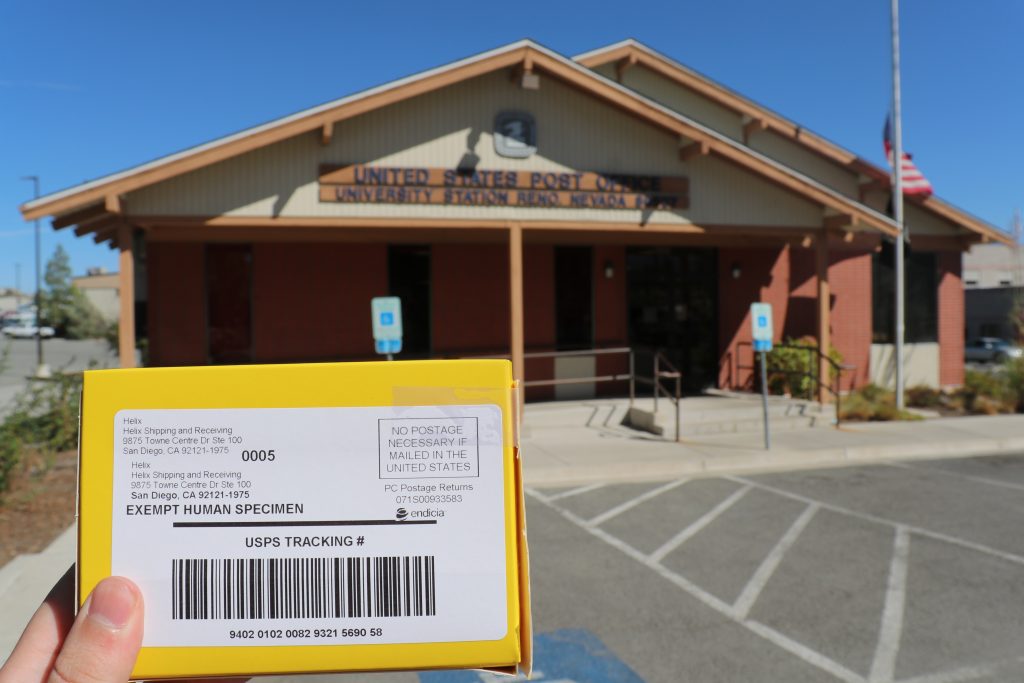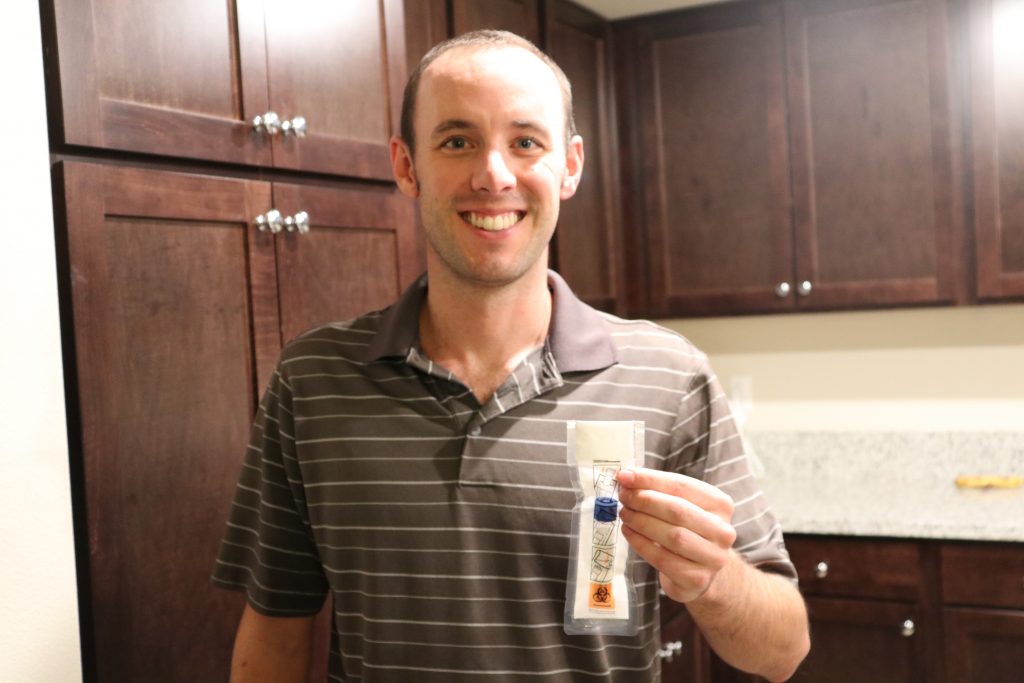
I’ve heard about people getting their genome tested to learn more about their ancestry or their health, but I never considered trying it myself until I heard about the Healthy Nevada Project.
Launched in 2016 by the Desert Research Institute, Renown Health and Helix, the Healthy Nevada Project can identify a genetic mutation that can influence my risk for developing three diseases that are known to be clinically-actionable, meaning they can be treated, prevented,
delayed or reduced with appropriate medical guidance.
These three diseases include Hereditary Breast and Ovarian Cancer; Familial Hypercholesterolemia, which is a condition that prevents your body from removing bad cholesterol from the bloodstream; and Lynch Syndrome, a common cause for hereditary colon and endometrial cancers.
So it seemed straightforward enough: order your free testing kit online, spit in the tube, send it back, and get your results. But at first, like I imagine many others might feel, I was a little uneasy about how my DNA might really be used.
“I think there’s often an expectation that we’ll be able to do things that we can’t actually do,” Liz Cirulli, a principal scientist with the Healthy Nevada Project, said. “There’s a concern that DNA is kind of all-knowing and that once you have seen someone’s DNA, you can tell everything
about them and that’s just so far from the truth. You can often tell if someone’s going to get a life-threatening disease, but you can’t tell if someone’s going to have a certain type of personality or a certain type of intelligence or anything like that.”
When your DNA is sequenced, they screen for the genetic variants, or mutations, in a person’s genome that research shows can elevate a person’s risk for disease.
“The genome is basically all the DNA that is in every cell of your body,” Cirulli said. “Each human genome has 3.2 billion bases of DNA in every single cell in your body and that is basically the instructions for how to build your cells, how to make your cells act, how to get your cells to interact with each other and the plan for all of the different things that your body needs to do.”
So now if you’re picturing a double-helix, the one with four base letters that form a sort of twisted ladder that you once saw in your high school biology textbook, that’s all in your genome.
More specifically, geneticists are looking at the protein-coding portion of your genome.
“Pretty much everything in your cells is made and constructed out of proteins,” Cirulli said. “[Proteins] are the building blocks of your body, they are actually what makes your body up. So being able to control the form of the proteins, how much of the proteins there are and what the proteins are doing is why the DNA is kind of in control of everything.
If there is a genetic variant in the protein-coding portion of your genome, that can change how your body functions. Most of the time these variants have minimal effect on your body, if any at all. But sometimes, the effect of these variants can be harmful: as just a single missing or changed letter can result in a damaged protein, an extra protein, or no protein at all, each which could lead to serious implications for our health.
“[Genetic testing] is the equivalent of spell-checking a gene,” Lindsay Meyer, a genetic counselor with Genome Medical and the Healthy Nevada Project, said. “If there is a letter that’s changed, that they don’t expect to be there, that they know it’s been reported before in other individuals, we know that change kind of damages the gene in a way so it can’t function in the body, that would be considered a positive result that would lead to X, Y, Z condition.”
Since each of these diseases can be treated, prevented, delayed or reduced with the right clinical actions, people with positive results will receive guidance from genetic counselors like her so they can take the appropriate next steps.
So despite my initial reservations, I decided to participate and ordered my testing kit online. A few days later, it arrived.

As I get ready to take the test, I’m excited, but I’d be lying if I said I wasn’t even just a little bit anxious. Sure, I’m a young, healthy male and to my knowledge I have no pre-existing conditions or inherent health risks in my family. However, I’ve come to realize that if one of these genetic variants were found in my genes, I could better prepare myself and other members of my family who might also be at-risk.
So following the test’s instructions, I spit roughly half a dozen times into the tube to reach the marked fill line; ensuring the level of saliva, not just the bubbles, reaches the mark.
I enclose my sample into a provided shipping box and send it back to Helix to be processed.
Having taken the test, I am comforted knowing that if a positive result does come back, I’ll have the support of a genetic counselor like Lindsay to guide me through my next steps.
On the other hand, I also learned that a negative test result doesn’t mean I won’t ever develop one of these diseases in the future, as there are a variety of other factors– aside from genetics– that can still cause these diseases.
But for now, I must wait, as it can take up to 8-10 weeks for my genes to be processed. And regardless of the results I get back, I know that taking this test is just the first step in understanding the ways I can protect my long-term health.





